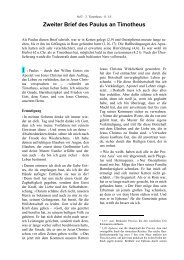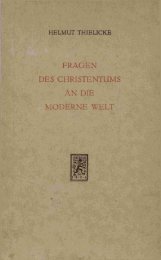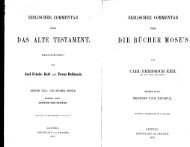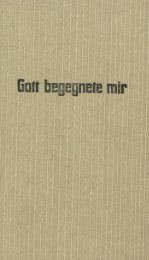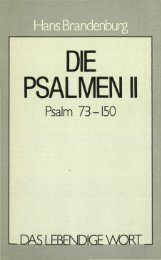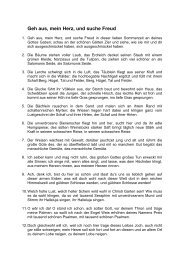Create successful ePaper yourself
Turn your PDF publications into a flip-book with our unique Google optimized e-Paper software.
The pumping action of the<br />
heart is caused by a rhythmic<br />
alternation between<br />
relaxation and contraction.<br />
These are respectively known<br />
as the diastolic (Greek: diastole<br />
= expansion) and systolic<br />
(Greek: systole = contraction)<br />
actions of the<br />
ventricles (Latin: ventriculus<br />
= small chamber). During<br />
diastole the ventricles are<br />
filled with blood, and when<br />
they contract, the blood is<br />
forced into the main arteries.<br />
The four heart valves, situated<br />
at approximately the<br />
same level in rings of connective<br />
tissue, prevent the<br />
blood from flowing back.<br />
<br />
<br />
<br />
<br />
<br />
<br />
<br />
<br />
<br />
<br />
<br />
<br />
<br />
<br />
<br />
<br />
Brain<br />
Thyroid gland<br />
Thyroid artery<br />
Pulmonary circulation<br />
Pulmonary vein<br />
Aorta<br />
Splenic artery<br />
Spleen<br />
Superior mesenteric artery<br />
Renal artery<br />
Kidney<br />
Intestine<br />
Renal vein<br />
Portal vein<br />
Liver<br />
Inferior vena cava<br />
Hepatic veins<br />
Pulmonary artery<br />
Superior vena cava<br />
Thyroid vein<br />
52<br />
<br />
<br />
<br />
<br />
The heart and the circulation of blood.<br />
Schematic representation of the connections between<br />
the two halves of the heart and the minor (pulmonary)<br />
as well as the major (rest of the body) circulatory<br />
systems.




